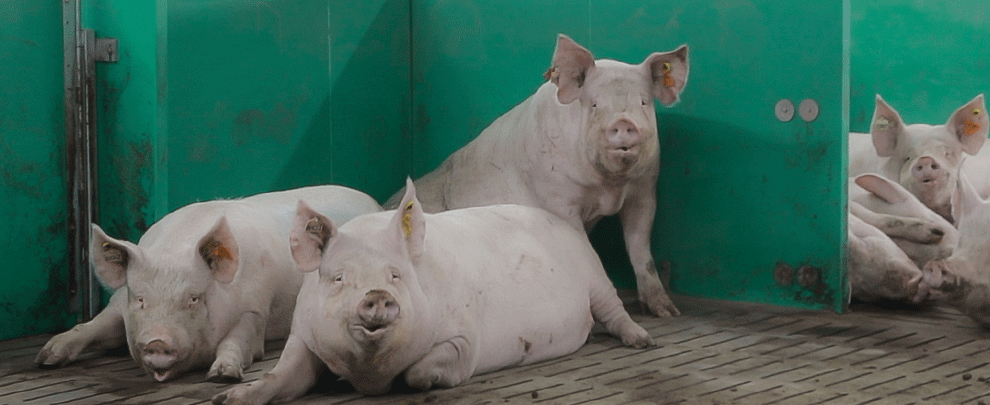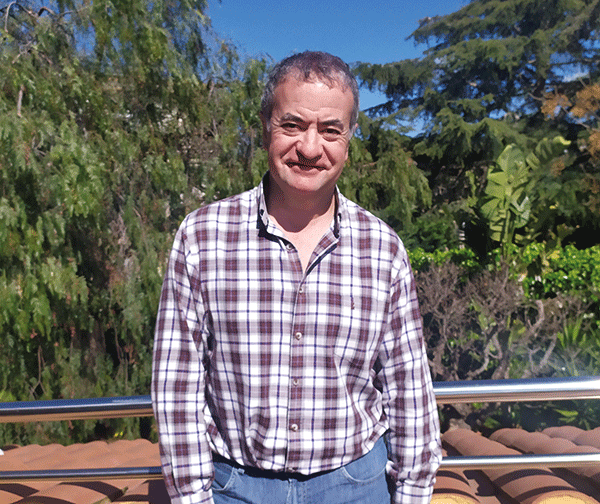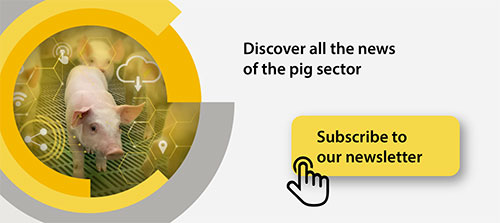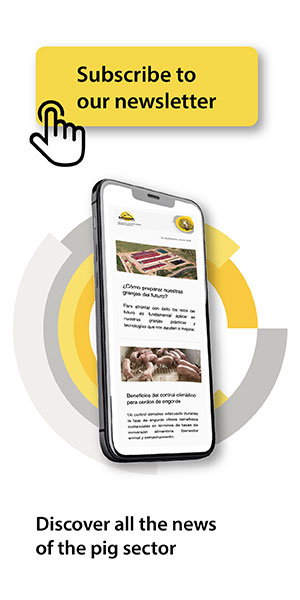Blog
Blog

How has animal welfare evolved in the last 25 years?
18th July 2024 - News
The perception of the importance of animal welfare and its benefits on the condition of animals and farm productivity has changed exponentially in the last 25 years. What in 1998 some described as a fad has been established as a critical factor for its future from the pork sector, a professional need to do things well, and social pressure to produce more sustainably. In 1998, professor and animal welfare expert Xavier Manteca was already discussing the growing concern in the industry about animal welfare. Twenty-seven years later, we analyze with him how welfare has evolved on Spanish farms and the pending challenges.

Xavier Mantenca, professor and expert in animal welfare. Photo: Xavier Manteca.
What was the perception of the industry in terms of animal welfare more than 25 years ago?
In 1998, animal welfare was relatively new in Spain, not in other countries, but in Spain, where it was seen with disbelief, scepticism, and particular animosity. First of all, it was thought this was a trend in northern European countries, which needed to be clarified in other countries like ours. It was also believed that it would significantly harm the profitability and economic sustainability of the sector. Luckily, we are in a very different situation now, and no one thinks animal welfare is a fad. However, it must be paid attention to because it is something important that affects sustainability, not only socially but also economically and the health of the sector. Since then, we have overcome one of the noteworthy challenges already beginning to be discussed in those years: the prohibition of cages in gestation. A standard answer then was that it was about an unrealistic change and that practically all gestation sows would abort. This has not been the case, and production rates, at least, are maintained with group gestation systems, and the Spanish pork industry continues to be enormously competitive.
What has happened in these 30 years so that Animal Welfare has positioned itself as a priority issue on farms, and more and more rulings are being legislated in this regard?
Two things have happened. The first is that society's sensitivity to this issue has increased in and outside Europe, and that sensitivity is increasing, which is why legislators respond to this social demand. On the other hand, something that is equally important has happened to me, and that is that we have more and more scientific evidence that improving animal welfare conditions has positive effects on the sustainability of the industry and its productivity. This is not just about meeting societal expectations, but also about ensuring the long-term economic viability of the pork industry. For example, when one of the crucial challenges is the issue of antimicrobial resistance, there is increasing evidence that having good management and well-being standards, optimal biosafety, and good vaccination programs allows us to reduce or rationalize antimicrobials. Therefore, two factors have come together: first, there is an increase in social sensitivity throughout Europe and beyond, and, on the other hand, there is evidence that improving animal welfare has positive and significant effects on production.
What are some pending issues in the industry regarding animal welfare that have not been addressed in recent years?
There are three things, some of which were already beginning to be discussed then and still need to be entirely resolved. One of them is the prevention of autophagy in the bait. Many factors influence this, from providing the animals with manipulable material to the densities of the pens, ventilation, etc. This unresolved issue is still on the table: strategies to prevent caudophagy without always resorting to tail docking. Next is the problem of castration without anaesthesia or analgesia, which remains a challenge. Something that was not on the table then and is now is a possible change in the farrowing room accommodation system.
Is this change towards free sowhood one of the significant future challenges in animal welfare in the short and medium term?
It seems so, and there are already farms that are doing it. Therefore, there is no doubt that working with different maternity housing systems is viable. What is certain is that there are various alternatives to answer this question. Free farrowing pens are an option, but there are other possibilities. That is, there is the possibility of continuing to restrict sow movement for some time when there is a greater risk of piglet crushing and then offering the sow more freedom of movement. It is true that, like all changes, it will have an economic cost, as the shift from gestation cages to group accommodation once had. This cost, however, should be seen as an investment in the future of the industry, ensuring its continued competitiveness and meeting evolving societal expectations. But what I would like to think is that in this case, we will know how to anticipate the legal requirements and do not leave the change until the last minute.
Is there a limit on animal welfare?
As in any other area of life, you can continuously improve. Perfection does not exist. Scientific research advances, discovers new strategies, and we know many important things to do. One of them, which is essential for me when we want to improve animal well-being, is staff training. Many studies show that if we had to choose a single strategy to improve animal welfare, the most effective would be to improve people's training, training, and job satisfaction. It is absurd, not only for ethical and moral reasons but also for practical reasons, to demand very high animal welfare and not worry about the welfare of the people who have the animals under their responsibility. Therefore, we can always have a more trained staff, and it can constantly be improved.
Does the sector's future involve adapting to all the animal welfare requirements and regulations that may arise?
Because assuming adapting to regulations is a legal imperative, there is nothing more. But beyond that, no one doubts that the industry has essential challenges, some related to the perception of public opinion, and, of course, the only way to respond to those challenges is to do things every time. Better in terms of animal welfare and other areas. For this reason, if we want the Spanish pork industry to continue to be competitive and a leading industry in the world, as it already is now, that means considering animal welfare.
Precisely referring to increasingly demanding public opinion. Do you think the consumer will have to pay more in the future for better production in terms of well-being?
It is possible that not only animal welfare but also other requirements could have an impact on production costs and, therefore, on the price of meat. We can't rule it out. In any case, I believe that the challenge that people who are dedicated to animal welfare have is to find strategies and work together with producers and with the industry in general to develop strategies that improve animal welfare without losing sight of the importance that the industry is economically competitive. If the numbers do not come out at the end of the year, the other sustainability is no longer relevant because the economic activity disappears. So, I believe that there is a long way to go and much room for improvement and that with imagination and rigorous work, they can achieve standards of very high animal welfare, much higher even than what we have, and at the same time maintain the economic competitiveness of the sector.
Finally, do you think that by improving animal welfare, we also enhance the sector's image and, therefore, the pork consumption figures?
I believe that some members of society's criticisms of the pork industry or livestock farming are possibly related to environmental and animal welfare issues. For what is so important, we have to work well on both aspects and tell them. It is likely that no matter how well we do things, there is always a part of the population that is critical, but that is not a tragedy either. However, a good part of society would be very receptive and respond very well to the fact that the industry not only worked well in all these areas, which it already does, but was also proactive in communicating these improvements to society.








